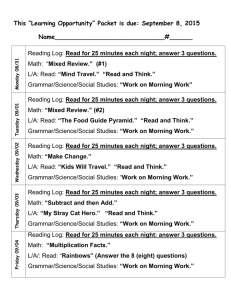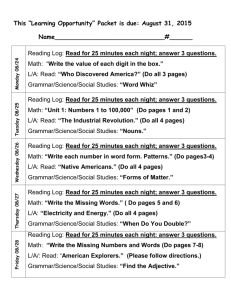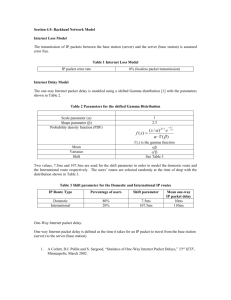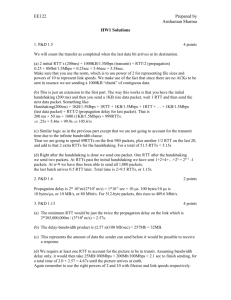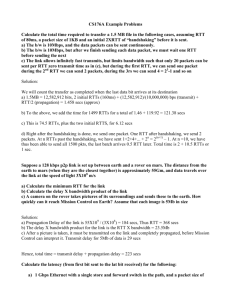Quiz 1
advertisement
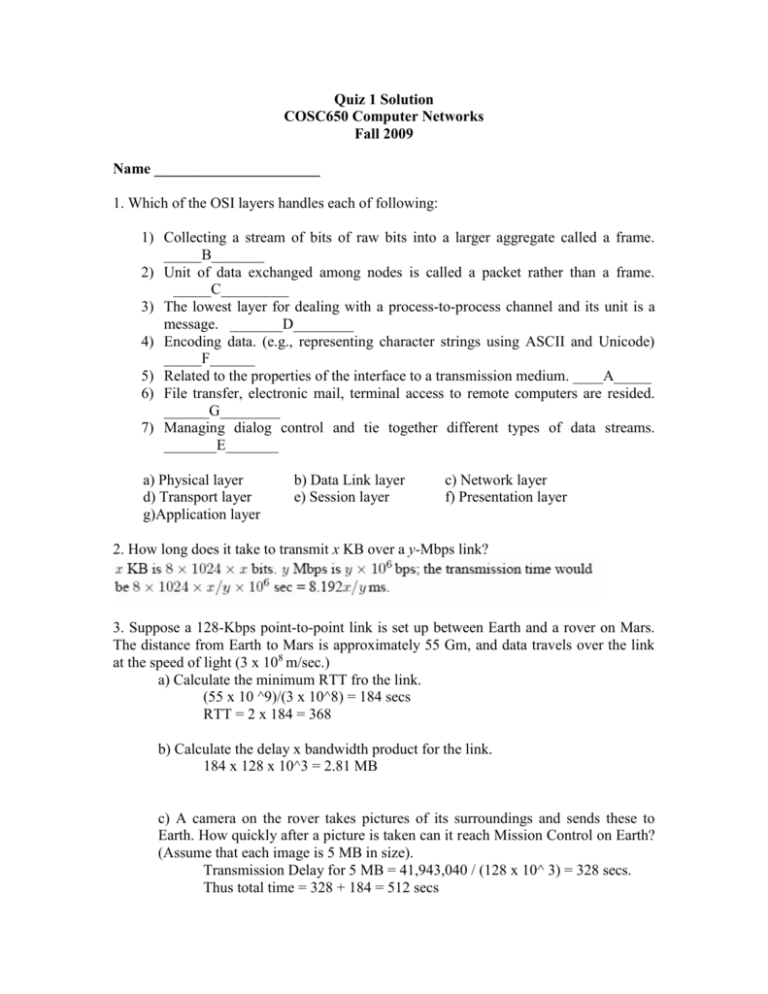
Quiz 1 Solution COSC650 Computer Networks Fall 2009 Name ______________________ 1. Which of the OSI layers handles each of following: 1) Collecting a stream of bits of raw bits into a larger aggregate called a frame. _____B_______ 2) Unit of data exchanged among nodes is called a packet rather than a frame. _____C_________ 3) The lowest layer for dealing with a process-to-process channel and its unit is a message. _______D________ 4) Encoding data. (e.g., representing character strings using ASCII and Unicode) _____F______ 5) Related to the properties of the interface to a transmission medium. ____A_____ 6) File transfer, electronic mail, terminal access to remote computers are resided. ______G________ 7) Managing dialog control and tie together different types of data streams. _______E_______ a) Physical layer d) Transport layer g)Application layer b) Data Link layer e) Session layer c) Network layer f) Presentation layer 2. How long does it take to transmit x KB over a y-Mbps link? 3. Suppose a 128-Kbps point-to-point link is set up between Earth and a rover on Mars. The distance from Earth to Mars is approximately 55 Gm, and data travels over the link at the speed of light (3 x 108 m/sec.) a) Calculate the minimum RTT fro the link. (55 x 10 ^9)/(3 x 10^8) = 184 secs RTT = 2 x 184 = 368 b) Calculate the delay x bandwidth product for the link. 184 x 128 x 10^3 = 2.81 MB c) A camera on the rover takes pictures of its surroundings and sends these to Earth. How quickly after a picture is taken can it reach Mission Control on Earth? (Assume that each image is 5 MB in size). Transmission Delay for 5 MB = 41,943,040 / (128 x 10^ 3) = 328 secs. Thus total time = 328 + 184 = 512 secs 4. Hosts A and B are each connected to a switch S via 10-Mbps. The propagation delay on each link is 20µs. S is a store-and-forward device; it begins transmitting a received packet 35 µs after it has finished receiving it. Calculate the total time required to transmit 10,000 bits from A to B. A S B a) As a single packet. b) Consider two 5,000-bit packets sent one right after the other. At the given table of times, fill them up. Time T=0 T= 500 T= 520 T= 555 T= 1000 T= 1055 T = 1075 T = 1575 Event start A finishes sending packet 1, starts packet 2 Packet 1 finishes arriving at S packet 1 departs for B A finishes sending packet 2______ packet 2 departs for B bit 1 of packet 2 arrives at B. last bit of packet 2 arrives at B 5. Explain the effective throughput briefly. The actual amount of data we can transmit for a total transfer time. Transferring a larger amount of data will improve the effective throughput. Infinitely large transfer size will make effective throughput to be network bandwidth.







